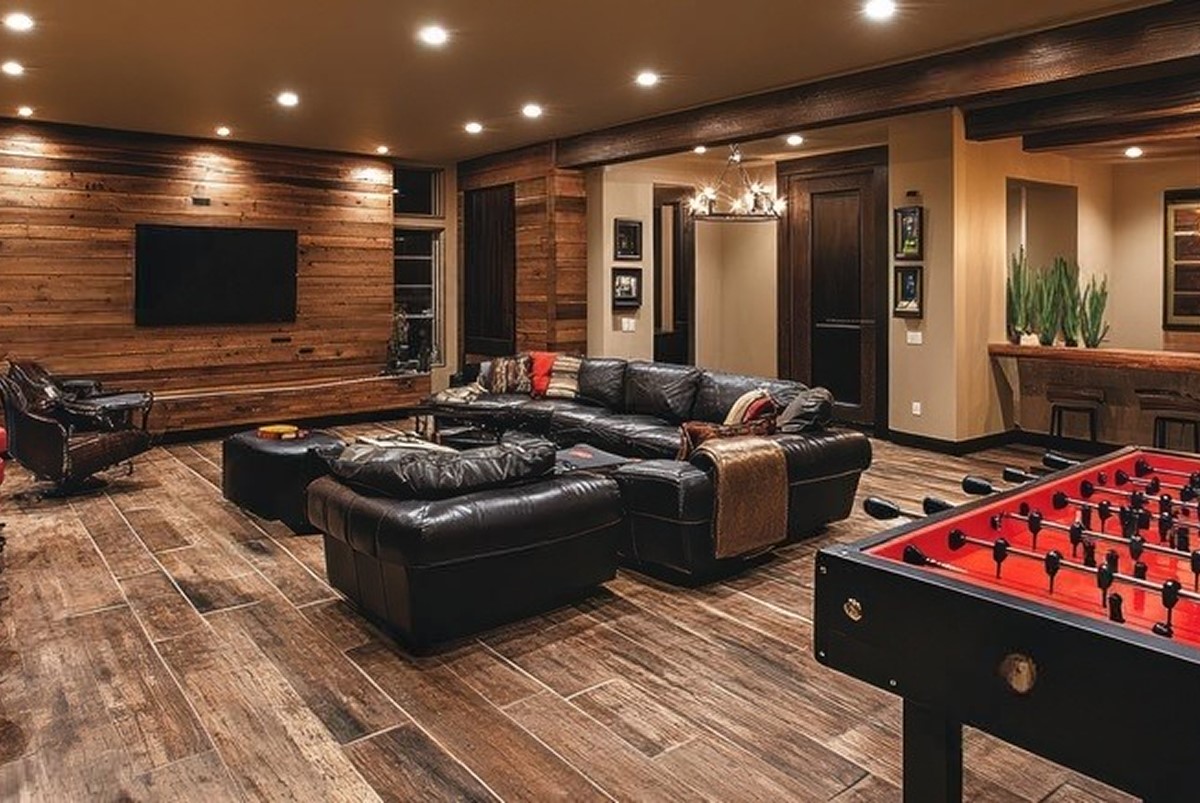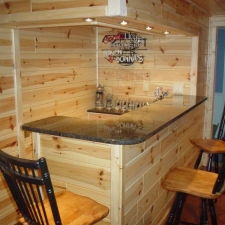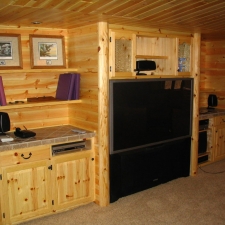Finish Your Basement Walls With Knotty Pine Paneling

A finished basement adds more living space and market value to a home. Of the materials available to install on the walls, knotty pine paneling is a gorgeous choice. It can also be used for ceilings with a light or whitewashed stain to brighten the area. Knotty pine is a natural product and adds a cozy and rustic charm to any size basement.
Why Use Knotty Pine Paneling For Basement Walls
In our day of using eco-friendly building materials, knotty pine paneling stands out because it’s sustainable. Many stands of trees are harvested and replanted each year for future supplies of pinewood. There are many other reasons for using this beautiful wall material:
- Of all native woods, knotty pine is the most affordable.
- It is readily available year-round from our inventory.
- Knotty pine is lightweight and easily worked with tools.
- It has attractive characteristics of dark knots, grain, and color.
- Knotty pine is a durable and stable wood product for walls.
- It can be ordered in unfinished and pre-finished conditions.
Knotty pine paneling is not used only in log homes and cabins. Because it can be stained a myriad of colors, it is practical for different home and décor styles. Whether building a new house or replacing the walls in an existing house, knotty pine is an amazing addition.
Knotty Pine Wall Considerations
 When making plans for your walls, some considerations might get overlooked. One decision is selecting the width of the paneling and another is using the same widths or random widths. Knotty pine paneling is available in widths of 4”, 5”, 6”, and 8” a thickness of ¾” to meet your preferences.
When making plans for your walls, some considerations might get overlooked. One decision is selecting the width of the paneling and another is using the same widths or random widths. Knotty pine paneling is available in widths of 4”, 5”, 6”, and 8” a thickness of ¾” to meet your preferences.
You can choose between tongue and groove end-matching boards or boards without this feature. The first choice goes up faster and easier and creates tight-fitting joints. This style is virtually a “no-waste” product because the sawn-off pieces are used to start the next row.
The layout pattern is another fun decision for your basement finishing project. The typical installations are horizontal, vertical, diagonal, a combination of them, and unique designs. Since you are finishing a basement, the style can be more casual than a living room or bedroom.
“A finished basement adds more living space and market value to a home. Of the materials available to install on the walls, knotty pine paneling is a gorgeous choice.”
Purchase Unfinished Or Pre-Finished Paneling
 One noticeable benefit of using knotty pine paneling on the walls is the selection of available finishes. You can choose among these three choices:
One noticeable benefit of using knotty pine paneling on the walls is the selection of available finishes. You can choose among these three choices:
- Smooth, unfinished surface
- Finished with a clear top coat
- Finished with stain and a clear top coat
If you like to apply finishes to wood, you can do the job yourself. You can also let someone else do the work such as hiring a painter or letting our finishing department do it. There are some distinct advantages to letting our finishing department prepare your paneling:
- All finishes are applied in a controlled temperature and humidity environment.
- Our craftsmen do a better job because there are no thin spots or runs in the finish.
- You don’t need to wait on the weather or smell the finishing products’ odors.
- A lot of time and effort is saved by installing pre-finished paneling.
Trims And Molding For Knotty Pine Paneling Walls
To finish your basement project, you will need to install door, window, ceiling, corner trims and baseboards. If chairs will sometimes be placed against walls, chair railing should be installed.
- Door and Window – Knotty Pine 1x3 Colonial or Round Over Casing
- Ceiling – Knotty Pine Ceiling Trim or Crown Molding
- Corners – Knotty Pine Inside and Outside Corner trim
- Baseboard – Knotty Pine 1x5 Baseboard and ¾” Quarter Round
Quality trims that coordinate with your knotty pine wall paneling and flooring add the perfect touch. They are easy to install with a finishing nail gun and the appropriate size nails.
Tips For Installing Knotty Pine Paneling Basement Walls
Prepare the walls by cleaning them to remove dust, debris, or any old paint or finish. If any walls are poured concrete or block, secure furring strips to them to hold the paneling. If any Walls are drywall, decide whether to remove it or install the paneling on top of it. If you remove the drywall, do a thorough clean-up job. The easiest installation job is when there is uncovered existing wall framing for the paneling.
Make sure the first bottom row is level and about 3/16” above the floor. Secure it and all subsequent rows to the wall framing with a nail gun. You will need to add short horizontal boards between the wall studs if you lay out the paneling vertically or diagonally. Allow for cutting out places for electrical outlets, switches, light fixtures, smoke detectors, and other devices. Purchase high-quality, defect-free knotty pine paneling for your basement walls and ceilings and you will never be sorry.
 Store Location
Store Location







